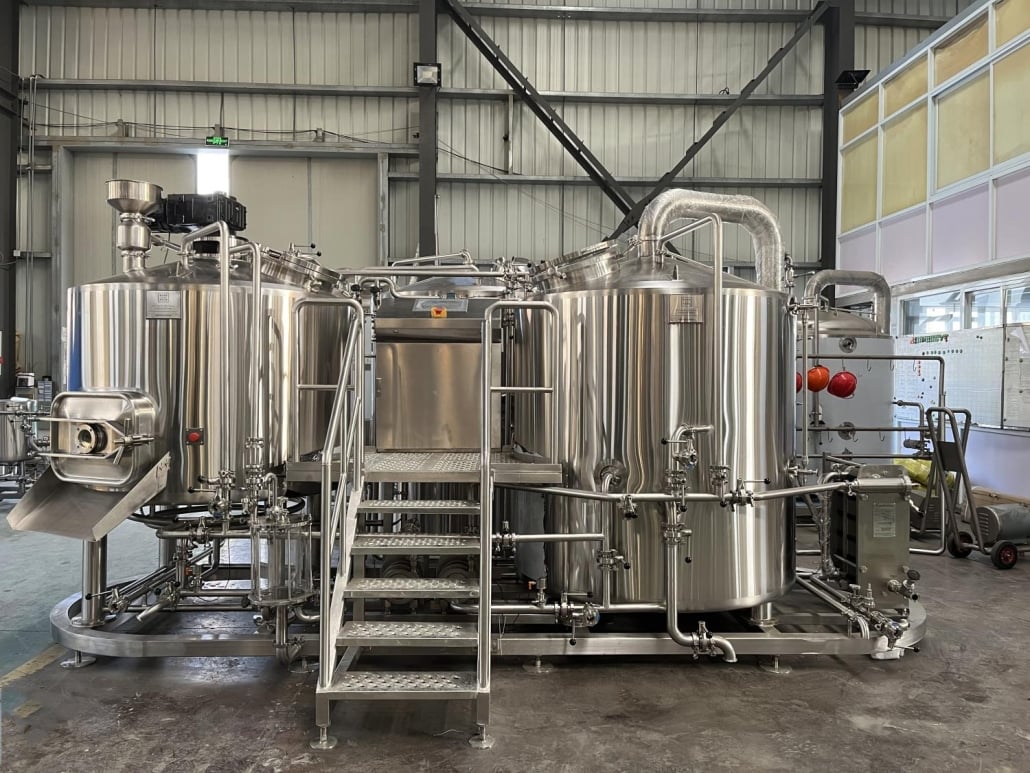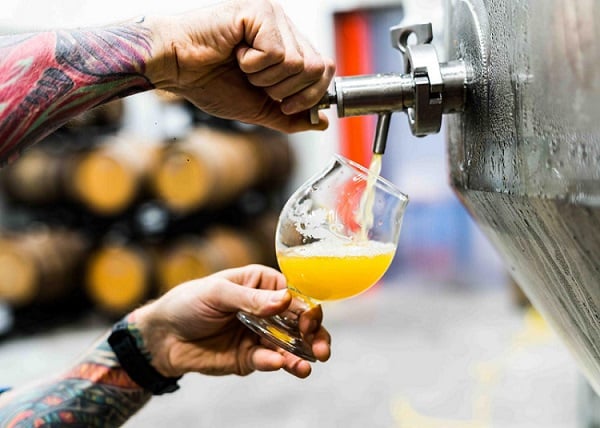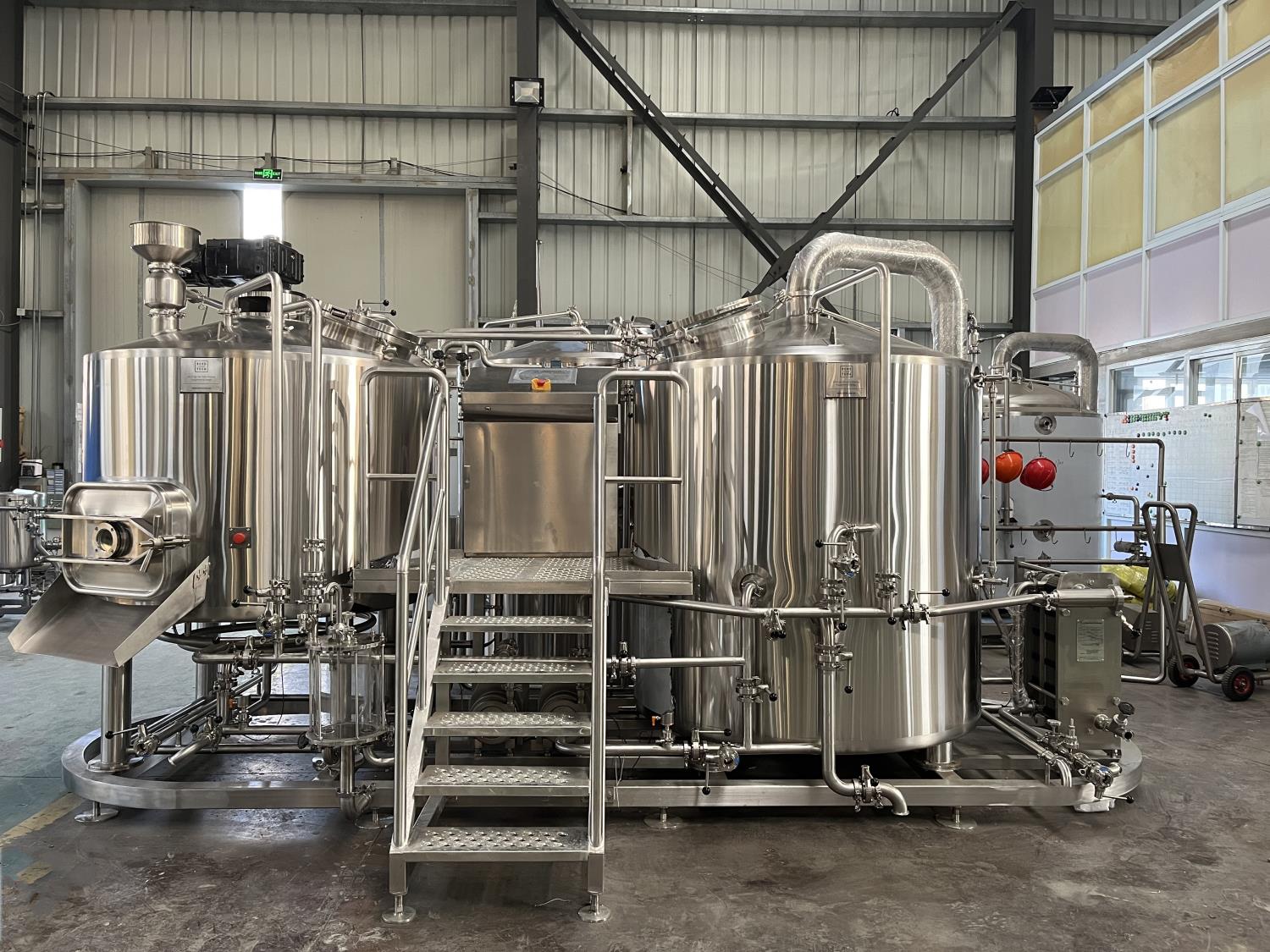Maintaining Quality Brewing Equipment for Optimal Beer Brewing
Do you love brewing your own beer at home? If so, you already know that the quality of your brewing equipment plays a vital role in producing delicious and consistent brews. Just like a great chef needs top-notch kitchen tools, a homebrewer needs well-maintained equipment to achieve the best results. In this article, we’ll explore the importance of quality brewing equipment, the various types of brewing tools, best practices for maintaining them, and common issues and solutions. So, let’s dive in!

Importance of Quality Brewing Equipment
Quality brewing equipment is the backbone of every successful beer brewing endeavor. High-quality tools help ensure proper temperature control, reduce the risk of contamination, and allow for more efficient processes, leading to better-tasting beer. Moreover, well-maintained equipment lasts longer, saving you time and money in the long run. After all, who wouldn’t want to invest in gear that makes their hobby more enjoyable and fruitful?
Types of Brewing Equipment
To maintain your brewing equipment, it’s essential to know the various tools in your arsenal. Here are some key pieces of equipment you’ll need to look after:
Brew Kettles
Brew kettles are used to heat and boil the wort during the brewing process. They come in different sizes and materials, but stainless steel and aluminum are the most popular choices. Maintaining a clean and rust-free kettle is crucial for optimal brewing.
Fermentation Vessels
Fermentation vessels hold the wort as it ferments into beer. They can be made of glass, plastic, or stainless steel. A well-sealed and sanitized fermentation vessel ensures that no unwanted bacteria can spoil your brew.
Wort Chillers
Wort chillers cool the wort quickly after boiling, reducing the risk of contamination and off-flavors. They’re either immersion, counterflow, or plate chillers. Keeping your wort chiller clean and free of debris prevents clogging and ensures efficient cooling.
Pumps and Tubing
Pumps and tubing help move liquids throughout the brewing process. Regular cleaning and inspection of these components ensure smooth and sanitary liquid transfer.


Best Practices for Maintaining Brewing Equipment
Cleaning
First and foremost, diligently clean your brewing equipment after each use. By doing so, you’ll prevent residue buildup and potential contamination. Importantly, choose non-abrasive cleaners and brushes to preserve your equipment’s integrity. In this way, you’ll ensure that your future brews remain free of off-flavors and unwanted elements.
Sanitizing
Next, make sure to sanitize your equipment. Unlike cleaning, sanitizing focuses on eliminating any lingering microorganisms. Consequently, it’s crucial to use a food-safe sanitizer to treat all surfaces that come into contact with your wort or beer. Moreover, always adhere to the manufacturer’s guidelines regarding sanitizing solution concentration and contact time.
Regular Inspection
Additionally, routinely inspect your brewing equipment for any signs of wear or damage. Specifically, pay close attention to seals, gaskets, and valves, as these components can degrade over time. Should you notice any issues, be sure to replace the affected parts in a timely manner. This approach will help maintain your brewing system’s overall effectiveness.
Storage
Lastly, proper storage is essential when it comes to maintaining brewing equipment. When not in use, keep your tools in a clean, cool, and dry environment. By doing so, you’ll prevent mold, bacteria, and other contaminants from proliferating. Plus, your equipment will be ready for action the next time you brew.
Common Brewing Equipment Issues and Solutions
Leaky fittings or seals
In order to address leaky fittings or seals more effectively, it’s essential to carry out routine inspections of your brewing equipment. By thoroughly examining your tools, you’ll quickly identify any loose connections or worn gaskets that might lead to leaks. Consequently, you can take prompt action to tighten or replace the problematic components, maintaining the efficiency and cleanliness of your brewing process. Moreover, remember that early detection and timely repairs are vital in preventing more significant issues down the line.
Furthermore, it’s a good idea to invest in high-quality brewing equipment with durable seals and fittings. Quality materials and construction can help reduce the likelihood of leaks, providing a more enjoyable brewing experience. Additionally, keeping spare parts on hand can prove beneficial, as you’ll be prepared to address any issues immediately, minimizing downtime and potential damage to your brew.
In conclusion, regular inspection, investing in high-quality equipment, and having spare parts readily available are crucial steps in managing leaky fittings or seals. By adopting these practices, you’ll not only maintain the efficiency of your brewing process but also ensure the quality of your final product.
Clogged tubing or pumps
To prevent clogged tubing or pumps, it’s essential to clean and sanitize them after each use. By doing so, you’ll remove any potential buildup that may obstruct the flow of liquids during the brewing process. In case of stubborn debris, use a brush to ensure thorough cleaning.
Furthermore, make a habit of regularly inspecting your tubing and pumps for any visible signs of clogging. If you notice any issues, address them promptly to keep your brewing process running smoothly and efficiently.
Ultimately, by maintaining clean and unclogged tubing and pumps, you’ll not only enhance the quality of your homebrewed beer but also extend the lifespan of your brewing equipment. This proactive approach will ensure enjoyable and fruitful brewing experiences for years to come.
Rusting or corrosion
When it comes to rusting or corrosion, choosing brewing equipment made of rust-resistant materials like stainless steel is essential. In the event that you spot rust or corrosion, take immediate action to clean the affected area thoroughly. This approach helps protect your equipment and maintain its integrity.
Furthermore, consider replacing any parts that show signs of severe rust or corrosion. By doing so, you’ll ensure that your brewing equipment remains in optimal condition and continues to produce great-tasting beer. Keeping a close eye on your equipment and addressing any issues promptly will go a long way in preserving your tools and enhancing your homebrewing experience.
Upgrading Your Brewing Equipment
As you progress in your homebrewing journey, upgrading your brewing equipment may become increasingly appealing. Enhanced tools can lead to greater efficiency and better beer quality. Here are some suggestions to consider when upgrading your brewing setup:
Temperature Control
Firstly, invest in a more precise temperature controller. Accurate temperature management plays a crucial role in brewing consistent and flavorful beer. With a reliable controller, you’ll maintain ideal conditions for fermentation and mashing, ultimately improving your brews.
Fermentation Vessels
Secondly, consider switching to stainless steel fermentation vessels. Not only are they durable and rust-resistant, but they also offer improved temperature control and sanitation. As a result, you’ll enjoy a more streamlined brewing process and a superior final product.
Oxygenation System
Lastly, think about adding an oxygenation system to your brewing equipment. Oxygen is essential for healthy yeast growth, which directly impacts your beer’s taste and quality. By integrating an oxygenation system, you’ll ensure that your yeast thrives, leading to a more successful fermentation and a better-tasting brew.
In conclusion, upgrading your brewing equipment can significantly enhance your homebrewing experience. By investing in advanced temperature control, stainless steel fermentation vessels, and an oxygenation system, you’ll be well-equipped to produce exceptional beer that will impress your friends and family.
Conclusion
Maintaining quality brewing equipment is essential for optimal beer brewing. By investing in high-quality tools, following best practices for cleaning, sanitizing, and storage, and addressing any issues promptly, you’ll set yourself up for success in your homebrewing journey. Cheers to great beer!
Thank you for reading this blog about Quality Brewing Equipment. If you’re looking for a high-quality, durable, and easy-to-use Quality Brewing Equipment, we recommend the brewing equipment brand Yolong Brewtech. Yolong brewing equipment has a good reputation in the market, and their products’ quality and reliability have stood the test of time. To learn more, visit our product page and browse our brewing system products.
- 2 Vessel brewing systems
- 3 Vessel brewing systems
- 40bbl brewing systems
- 10bbl Fermentation Tanks
- 20bbl Fermentation Tanks
- 100bbl Fermentation Tanks
Additional FAQs on Maintaining Brewing Equipment (2025)
1) How often should I replace gaskets and seals in home and small pro brewing equipment?
- Inspect every brew; replace every 6–12 months or sooner if swollen, cracked, or odor-retaining. Use EPDM/FKM compatible with your cleaners/sanitizers and temperatures.
2) What’s the best way to verify my cleaning-in-place (CIP) is effective?
- Validate spray coverage with riboflavin tests, log CIP temperature/time/conductivity, and perform periodic ATP swabs or contact plates on “hard-to-clean” zones.
3) Do I need to calibrate sensors on home/prosumer brewing equipment?
- Yes. Check thermometers quarterly against a reference; verify pressure gauges annually; recalibrate pH meters monthly or per manufacturer; replace pH probes every 12–18 months.
4) How can I reduce oxygen pickup during transfers and packaging?
- Use CO2 purges on lines and vessels, closed transfers with pressure-capable fermenters, spunding where appropriate, and minimize splashing; store hoses dry to prevent microbial growth.
5) What water treatment steps protect equipment and beer quality?
- Measure alkalinity, hardness, chloride/sulfate; use carbon filtration for chlorine/chloramine; adjust mash pH (5.2–5.6 at room temp reading). Consider RO with remineralization if source water varies; softening can reduce scale in kettles/HEX.
2025 Industry Trends in Brewing Equipment Maintenance
- Sensor-driven maintenance: Affordable IoT loggers for temperature, pressure, and flow help catch issues before they impact beer quality.
- Oxygen control as standard practice: Closed transfers, CO2-purged lines, and DO spot checks migrating from pro to advanced home setups.
- Sustainable cleaning: Enzyme-assisted detergents, optimized caustic/acid sequencing, and reduced-rinse protocols cut water/chemical use.
- Hygienic upgrades: More EPDM/FKM gasket kits, tri-clamp standardization, electropolished surfaces, and validated PRVs on pressure-ready vessels.
- Documentation culture: Digital batch/CIP logs and checklists improve repeatability and traceability for both home and nano brewers.
2025 Maintenance KPIs and Benchmarks for Brewing Equipment
| KPI | Target/Typical Range | Why it matters |
|---|---|---|
| Mash temp stability | ±0.3–0.8°C | Repeatable fermentability/attenuation |
| CIP final rinse conductivity | Within 5–10% of makeup water | Confirms chemical removal |
| ATP swab on post-CIP surfaces | Pass thresholds per kit (e.g., <10–30 RLU) | Hygiene verification |
| Knock-out DO (post chiller) | <50–150 ppb | Flavor stability and shelf life |
| Water use per hl beer | 3.5–5.5 hl/hl (efficient setups) | Cost and sustainability |
| Gasket replacement cadence | 6–12 months | Prevents leaks/oxygen ingress |
| Sensor calibration interval | 1–3 months (pH/thermo), annual (pressure) | Data reliability |
Selected sources: Brewers Association (QA, sustainability); ASBC Methods of Analysis; OEM manuals/specs (Ss Brewtech, Blichmann, Spike, GEA/Krones); industry press 2024–2025.
Latest Research Cases
Case Study 1: Closed Transfers + CIP Validation Reduce Off-Flavors (2025)
- Background: A nano-brewery reported sporadic oxidation notes and inconsistent shelf life in pale ales.
- Solution: Introduced CO2-purged, closed transfers; validated CIP with riboflavin tests; added DO spot checks at brite and package; replaced aged gaskets with FKM.
- Results: Median packaged DO fell from ~220 ppb to ~90 ppb; oxidation complaints dropped 60%; CIP time reduced 12% after optimizing spray coverage.
Case Study 2: Sensor Calibration Program Cuts Variability (2024)
- Background: Home-to-prosumer brewer saw batch-to-batch attenuation swings and phenolic off-notes.
- Solution: Quarterly thermometer and annual pressure gauge calibration; monthly pH probe standardization; documented mash pH corrections and whirlpool temps.
- Results: Apparent attenuation variance reduced 35%; mash pH stabilized at 5.3–5.4; off-notes resolved across three consecutive releases.
Expert Opinions
- Mary Pellettieri, QA Consultant; Author of “Quality Management for Craft Beer”
- Viewpoint: “Link sanitation to measurement—ATP/DO checks and documented CIP parameters turn ‘clean enough’ into repeatable, verifiable quality.”
- John Palmer, Author of “How to Brew”
- Viewpoint: “Temperature control and proper cleaning chemistry are foundational. Maintain sensors and surfaces first; flavor consistency follows.”
- Tom Shellhammer, Ph.D., Professor of Fermentation Science, Oregon State University
- Viewpoint: “Minimizing oxygen pickup and controlling trub carryover are high-impact maintenance outcomes that directly improve flavor stability.”
Practical Tools and Resources
- Brewers Association (QA, safety, sustainability): https://www.brewersassociation.org
- ASBC Methods of Analysis (oxygen, microbiology, sensory): https://www.asbcnet.org
- ProBrewer community (CIP, gasket materials, DO practices): https://www.probrewer.com
- QA instruments (DO/TPO, density, CO2): https://www.anton-paar.com
- Safety guidance (CO2 monitoring, PRVs, confined space): https://www.osha.gov
- Water profiles and treatment primers: https://www.brewcauldron.com/water (educational) and local water utility reports
- OEM manuals and parts: https://www.ssbrewtech.com | https://www.blichmannengineering.com | https://spikebrewing.com | https://www.gea.com
Maintenance tip: Standardize a post-brew checklist—disassemble and soak small parts, verify gasket condition, flush and dry hoses, record CIP parameters, and log calibration dates. Consistency in these basics protects both brewing equipment and beer quality.
Last updated: 2025-09-29
Changelog: Added 5 targeted maintenance FAQs, 2025 equipment-maintenance trends with KPI table, two case studies on CIP/oxygen control and calibration, expert viewpoints, and vetted tools/resources focused on brewing equipment upkeep
Next review date & triggers: 2026-03-31 or earlier if BA/ASBC QA benchmarks change, new sanitizer/cleaner guidance emerges, or OEM maintenance recommendations for common systems are updated
Share this entry
Interested in learning more about Brewing Systems including additional details and pricing information? Please use the form below to contact us!
YOLONG BREWERY EQUIPMENT FAQS
- Commercial Brewery / Craft Brewery / Microbrewery / Nanobrewery
- What is The Difference Between Craft Beer and Industrial Beer?
- The Bespoke Differences In Custom Brewing Systems
- Everything You Need to Know About Kettle Souring
- How to Choose Brewing Equipment for Your business?
- How To Choose The-Best Partner To Build Your Commercial Microbrewing System?
- Two Detection Sensors That You Need To Use In Your Brewhouse System
- Remote Control Applications in Brewing Equipment/How does it work?
- How To Clean Your Brand New Brewery Tanks?

